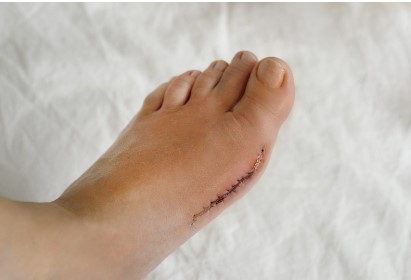Bunion surgery, or bunionectomy, is a common procedure for addressing a painful and often debilitating condition known as a bunion. A bunion is a bony bump that forms at the base of the big toe, where it joins the foot. This bump results from the misalignment of the toe joint, leading to pain, swelling, and discomfort. For many, bunion surgery becomes a necessary option to alleviate these symptoms and restore normal foot function. Here’s a detailed breakdown of what happens during bunion surgery.
Understanding the Procedure
Bunion surgery aims to correct the deformity and relieve the pain associated with bunions. The procedure generally involves realigning the toe joint and may include the removal of the bunion and/or reshaping the bones in the foot. There are several surgical techniques available, each tailored to the specific needs of the patient.
- Pre-Surgery Preparation
Before the surgery, patients undergo a thorough evaluation, including a physical examination and imaging tests such as X-rays. This helps the surgeon determine the extent of the deformity and the most appropriate surgical approach. Pre-surgery instructions may include avoiding certain medications, fasting, and arranging for post-surgical transportation. - Anesthesia
During the surgery, anesthesia is administered to ensure the patient remains comfortable. The anesthesia may be local, regional, or general, depending on the complexity of the surgery and patient preference. Local anesthesia numbs only the affected foot, while regional anesthesia blocks sensation in a larger area, and general anesthesia puts the patient to sleep for the duration of the procedure. - Surgical Techniques
Various surgical techniques can be used for bunion correction. The choice of technique depends on the severity of the bunion and the surgeon’s recommendation. Some of the common techniques include:- Osteotomy: This involves cutting and realigning the bones in the toe. The surgeon makes precise cuts in the bone to reposition it and then secures it with screws, pins, or plates.
- Exostectomy: This procedure focuses on removing the bony bump but does not address the underlying misalignment of the toe joint. It is often used in combination with other techniques.
- Arthrodesis: This technique involves fusing the bones in the affected joint. It is typically used for more severe bunions or when other methods have failed.
- Minimally invasive bunion surgery is an option for some patients, involving smaller incisions and potentially quicker recovery times. This technique aims to reduce surgical trauma and enhance healing.
- During the Surgery
The surgery is performed in a sterile operating room. The surgeon makes the necessary incisions and then corrects the bunion using the selected technique. Precision and attention to detail are crucial to ensure proper alignment and successful outcomes. The procedure can last from one to several hours, depending on the complexity of the bunion and the chosen surgical method. - Post-Surgery Care
After the surgery, patients are monitored in a recovery area until the effects of anesthesia wear off. It is common to have a bandage or splint on the foot to support the healing process. - Recovery and Rehabilitation
Recovery from bunion surgery varies from patient to patient and depends on the specific procedure performed. Generally, patients can expect a recovery period that includes:- Rest and Elevation: Keeping the foot elevated helps reduce swelling and promote healing.
- Follow-Up Visits: Regular follow-up appointments with the surgeon are necessary to monitor healing and remove any stitches or dressings.
- Gradual Return to Activity: Patients should gradually return to their regular activities, following the surgeon’s advice on weight-bearing and activity restrictions.
Potential Risks and Complications
Like any surgery, bunion surgery carries potential risks and complications. These can include infection, bleeding, or complications related to anesthesia. Other risks specific to bunion surgery include recurrence of the bunion, stiffness, or pain in the toe. Discussing these risks with the surgeon and following post-operative care instructions diligently can help minimize potential complications.
Conclusion
Bunion surgery is a well-established and effective method for treating painful bunions and improving foot function. With advancements in surgical techniques, including minimally invasive options, patients have more choices than ever for their bunion treatment. If you’re considering bunion surgery, it’s important to consult with a qualified surgeon to discuss the best approach for your specific condition and needs.
For those seeking specialized care, bunion surgery in Scottsdale, AZ, offers access to skilled professionals and state-of-the-art facilities.





